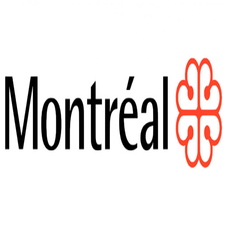Rain
Type of resources
Topics
Keywords
Contact for the resource
Provided by
Formats
Representation types
Update frequencies
status
-

This set shows the location of rain gauges, meteorological instruments intended to measure the quantity of precipitation that fell during a given time interval in a specific location, on the territory of the City of Montreal.**This third party metadata element was translated using an automated translation tool (Amazon Translate).**
-

Polygons representing runoff water retention basins at a resolution of one meter in order to identify the physical particularities of the territory. Runoff is defined as the flow of rainwater to the surface of the ground that does not evaporate and does not seep into the ground when the capacity to hold water and vegetation is reached. The [Climate Plan 2020-2030] (https://portail-m4s.s3.montreal.ca/pdf/Plan_climat%2020-16-16-VF4_VDM.pdf) aims, among other things, to improve urban planning and regulatory tools. Montréal is committed to updating the climate change vulnerability analysis carried out as part of the 2015-2020 Agglomération de Montréal Climate Change Adaptation Plan and to integrating it into the next urban planning and mobility plan. The map of runoff water retention basins was produced in 2021, with the collaboration of the Department of Geography of the University of Quebec in Montreal, to calculate the vulnerability to heavy rains in the agglomeration of Montreal. The data can also be consulted on the [interactive map of vulnerabilities to climate hazards in the Montreal agglomeration] (https://experience.arcgis.com/experience/944e0b7104bd491591ccca829da24670/page/Page/).**This third party metadata element was translated using an automated translation tool (Amazon Translate).**
-

Polygons representing areas vulnerable to heavy rains, heat waves, destructive storms, droughts, and floods. Vulnerability corresponds to the propensity or predisposition of a system (community, infrastructure and natural environment) to suffer damage caused by the manifestation of a climatic hazard. It varies according to the nature, extent and pace of the evolution of the event as well as the variation in the climate to which the system is exposed, the sensitivity of this system and its capacity to adapt. The [Climate Plan 2020-2030] (https://portail-m4s.s3.montreal.ca/pdf/Plan_climat%2020-16-16-VF4_VDM.pdf) aims, among other things, to improve urban planning and regulatory tools. Montréal has thus committed to updating the climate change vulnerability analysis, including the heat island map, carried out as part of the 2015-2020 Agglomération de Montréal Climate Change Adaptation Plan and to integrating it into the next urban and mobility plan. In addition, in order to take stock of the evolution of the Climate Plan, the City of Montreal annually publishes an [accountability report] (https://montreal.ca/articles/plan-climat-montreal-objectif-carboneutralite-dici-2050-7613) of its 46 actions as well as its eight indicators, including the state of the various climate hazards illustrated by vulnerability maps. The data can also be consulted on the [interactive map of vulnerabilities to climate hazards in the Montreal agglomeration] (https://bter.maps.arcgis.com/apps/webappviewer/index.html?id=157cde446d8942d7b4367e2159942e05).**This third party metadata element was translated using an automated translation tool (Amazon Translate).**
-

Data on flood zones include mapping carried out as part of the mapping program of the Canada-Quebec Convention from 1976 to 2001, the Program for the determination of flood ratings from 2001 to 2004 (PDCC), as well as the mapping carried out after that date by the Centre d'expertise du Québec (CEH) and its various partners.**This third party metadata element was translated using an automated translation tool (Amazon Translate).**
-

The Multi-Risk Vigilance Card is a product developed by the Ministry of Public Security (MSP) that brings together warnings and reports on phenomena of natural origin that may have consequences on the safety of citizens, goods and services to the population. It is updated continuously automatically. It allows for continuous monitoring of the province's territory in relation to dangerous natural phenomena. Environment and Climate Change Canada weather warnings for blizzard, fog, freezing rain, rain, fog, freezing rain, rain, snow, hail, hurricanes, tropical storms, winter storms, severe storms, tornadoes, tornadoes, storm winds, storm winds, strong winds, strong winds, strong winds, hurricane force winds, high winds, hurricane-force winds, heat waves, and all weather events whose severity* is greater than or equal to moderate; This data comes from the National Alert Aggregation and Dissemination System (ADNA) of the private company Pelmorex. The information conveyed in the alerts complies with the standards of the Common Alert Protocol (PAC). **This third party metadata element was translated using an automated translation tool (Amazon Translate).**
-

A regulated flood zone is an area of land likely to be flooded and delimited by mapping or, along the St. Lawrence River, by flood ratings. On the territory of Quebec City, the only regulated and mapped flood zones are appended to the revised Land Use and Development Plan (SAD). These areas, which are added to the river's flood zone delimited by flood ratings, are subject to the special standards of the transitional regime for the management of flood zones, banks and coastlines since 1 March 2022. ATTENTION: The route indicating the boundaries of flood zones is for illustrative purposes only. Legal delimitation work must be validated in the field by a land surveyor for each property concerned. Quebec City declines all responsibility for the interpretation of available data. **This third party metadata element was translated using an automated translation tool (Amazon Translate).**
 Arctic SDI catalogue
Arctic SDI catalogue